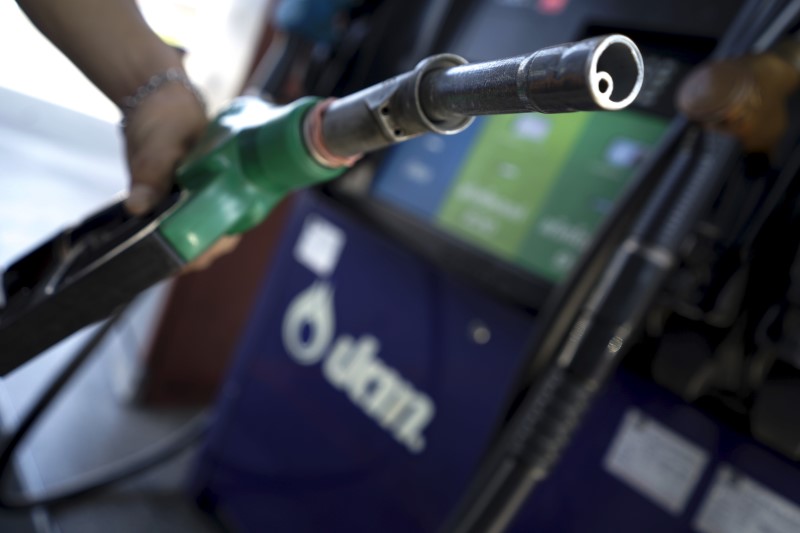By Dmitry Zhdannikov
LONDON (Reuters) - Oil prices jumped more than 2 percent on Monday to their highest since November 2015 on the back of more disruption to supplies from Nigeria and after long-time bear Goldman Sachs (NYSE:GS) said it was more positive about the market.
Brent crude futures were trading at $49.05 per barrel at 1304 GMT, up $1.23 or 2.5 percent. U.S. crude futures were up $1.23, or 2.5 percent, at $47.44 a barrel.
Supply disruptions have most likely pushed oil production below consumption levels in May for the first time in at least two years, meaning the world has started eating into the huge stockpiles of oil which knocked as much as 70 percent of crude prices between 2014 and early 2016.
The disruptions triggered a U-turn in the outlook for the oil market from Goldman Sachs, which had long warned of global storage hitting capacity and of another oil price crash to as low as $20 per barrel.
"The oil market has gone from nearing storage saturation to being in deficit much earlier than we expected," Goldman said.
"The market likely shifted into deficit in May ... driven by both sustained strong demand as well as sharply declining production," the investment bank said.
However, Goldman cautioned that the market would flip back into a surplus in the first half of 2017 as it said prices of around $50 per barrel in the second half of 2016 would see exploration and production activity picking up again.
In Nigeria, output has fallen to its lowest in decades following several acts of sabotage.
In the Americas, U.S. officials warned they were increasingly concerned by the possibility of an economic and political meltdown in Venezuela amid low oil prices, where crude production has also been falling due to power shortages.
In the United States, crude production has dropped to 8.8 million barrels per day (bpd), 8.4 percent below 2015 peaks as the sector suffers a wave of bankruptcies.
And in China, output fell 5.6 percent to 4.04 million bpd in April from a year earlier.
Countering this, supply from the Organization of the Petroleum Exporting Countries (OPEC) rose as its members engaged in a race for market share.
OPEC pumped 32.44 million bpd in April, up 188,000 bpd from March, the highest since at least 2008.
Also preventing steeper price jumps was a recovery in output in Canada, following closures due to a wildfire, as well as bloated global crude storages.
"The inventory buffer may be preventing full price recovery and ... the market is rightly nervous about the sustainability of outages," said Morgan Stanley (NYSE:MS).
Barclays (LON:BARC) said, "while the supply-side disruptions are supporting oil market balances, refinery margins are starting to weaken, especially in Asia". It said weaker demand from those refiners could produce downside risk to prices in the third quarter.

In a sign the oil price rally might be losing steam, data showed on Monday that speculators cut their holdings of Brent futures for a second week running, reducing their exposure by a total of 15 percent from record highs.